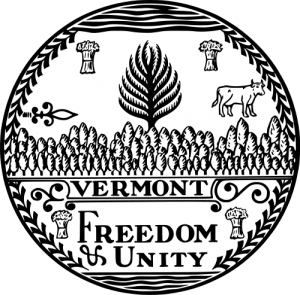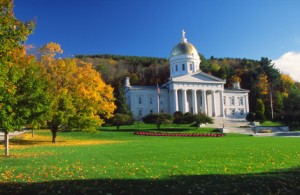 Vermont Population 2013
Vermont Population 2013
The United States Census Bureau estimates that the population of Vermont in 2013 was 626,011, which is ranked the 49th largest population in the United States. This estimate shows a 0.004% increase since the last census in 2010, also conducted by the United States Census Bureau. The population density of the state is 67.7 people per square mile, ranked the 30th largest density in the United States.
Vermont Population Projections
By the year 2015, the population of Vermont is expected to reach about 636,000 people, which is an approximate 1.6% increase from the current population. By the year 2020, the population of Vermont is expected to reach 666,000 people, which is an approximate 6.4% increase from the current population.
Vermont Land Mass
The state of Vermont is approximately 160 miles long and 80 miles wide with a square area of 9,615 square miles, making it the 45th largest state in the country. Of the 9,615 square miles, only 366 square miles are covered by water. The highest point in the state of Vermont is Mt. Mansfield, which is 4,393 feet above sea level. The lowest point in the state is Lake Champlain, which reaches 95 feet above sea level. The geographic center of Vermont is located in Washington County, 3 miles east of Roxbury. Vermont is bordered by three states: New York, New Hampshire, and Massachusetts. Canada borders the state on the north.
Vermont can be broken up into six distinct geographic land areas: the Northeast Highlands, the Western New England Upland, the Green Mountains, the Vermont Valley, the Taconic Mountains, and the Champlain Valley. The Northeast Highlands is an area of granite mountains divided by streams in the northeast part of the state. The Western New England Upland covers most of the eastern portion of the state with fertile lowlands and lakes. The Green Mountains is in central Vermont, covering the area with mountains and important minerals. The highest point in the state is found in the Green Mountains. The Vermont Valley is in the western portion of the state, made up of rivers and river valleys. The Taconic Mountains covers part of southwestern Vermont with mountains, river valleys, and lakes. Lastly, the Champlain Valley is the portion of the state that borders Lake Champlain and is known as quite fertile land. The largest city of the state, Burlington, is found in this area.
Vermont Demographics
Of the approximate 0.626 million people in the state of Vermont, about 50.7% of the population is female, while 49.3% is male. Also, approximately 95% of the population identifies as white (including Hispanic or Latino). But, out of that 95%, only about 2% do identify as Hispanic or Latino and the other 93% as Caucasian. Those that identify as Black or African American make up only 1% of the entire population of the state of Vermont. The rest of the population is made up of those that identify as Asian, American Indian, Alaskan Native, Hawaiian, other Pacific Islanders, or those that identify as two or more races. These other races make up about 4% of the Vermont population.
Vermont Religion
The population of Vermont identifies as religious at a much lower rate than the national average. About 34% of the state population identifies as religious, compared to the national average of 49%. Out of the 34%, about 21% identify as members of the Catholic Church, making it the largest denomination in the state of Vermont. All the other Christian denominations make up about 12.4% of the population. Those who identify as Jewish, Islamic, or Eastern religions only make up 0.6% of the population.
Vermont in the Summer
 Vermont Economy
Vermont Economy
The economy is known to be quite diverse and not dependent on any single sector for the success of the economy. About 75% of the agricultural income of the state comes from the sale of dairy products. The leading vegetables grown in the state are sweet corn and potatoes. Vermont is also the leading state in the production of maple syrup. In fact, maple is the official state flavor of Vermont. The unemployment rate in the state is approximately 4% compared to the national unemployment rate of 7.9%. The only states that have lower unemployment rates are Nebraska, North Dakota, and South Dakota.
Other Resources
Learn more about Vermont Here


